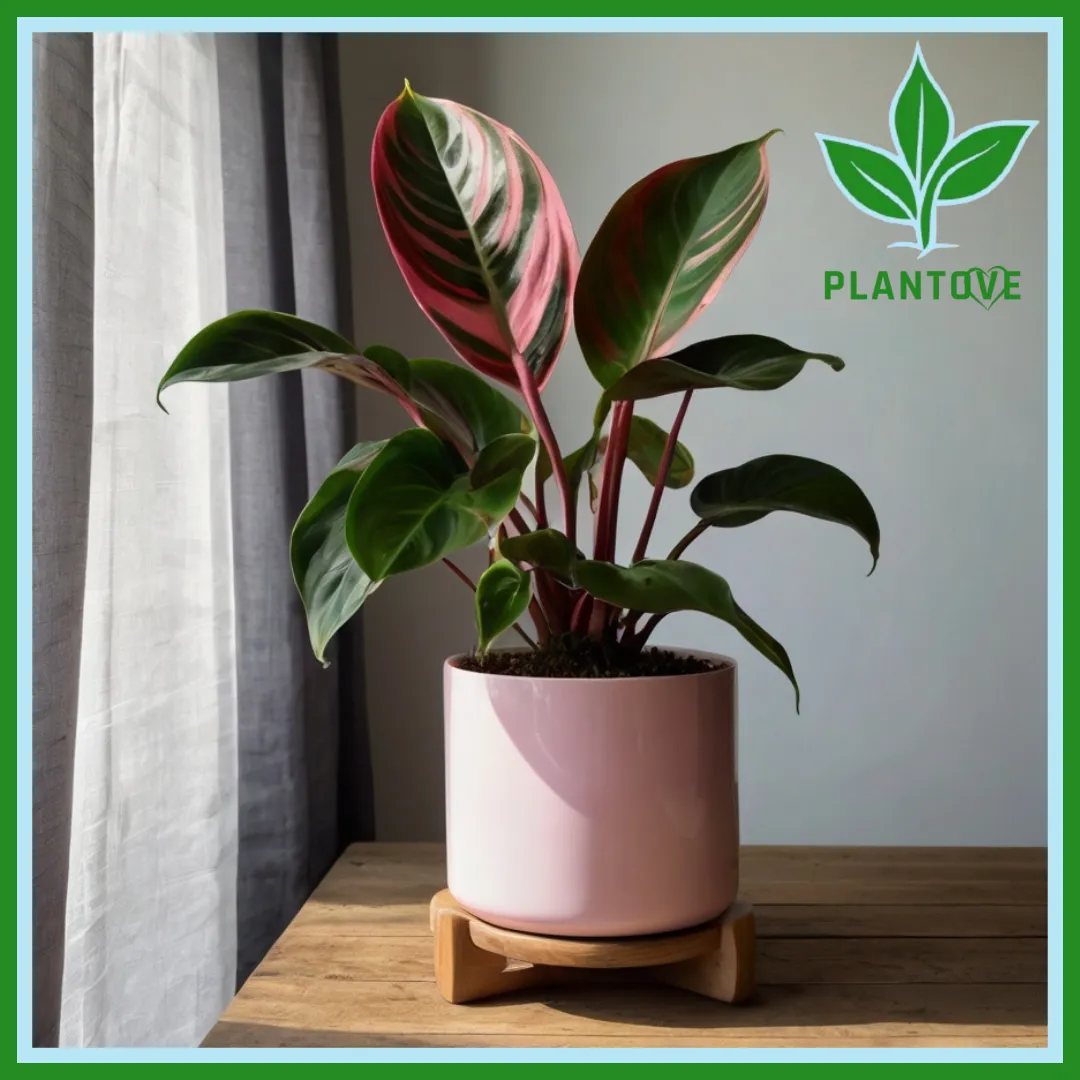The Pink Princess Plant (Philodendron erubescens) has taken the plant community by storm due to its striking pink and green leaves. This rare and trendy plant has become a symbol of elegance and luxury in the world of indoor gardening. In this article, we’ll cover everything you need to know about the Pink Princess Plant, from its origin and unique characteristics to detailed care tips to help it thrive in your home.
What Is the Pink Princess Plant?
The Pink Princess Plant is a cultivar of the Philodendron erubescens, known for its heart-shaped, dark green leaves splashed with vibrant pink variegation. This plant belongs to the Araceae family and is native to Colombia, where it grows in tropical rainforests. The contrasting pink and green foliage is what makes it a favorite among plant collectors.
Characteristics of the Pink Princess Plant
- Scientific Name: Philodendron erubescens
- Common Name: Pink Princess Plant
- Family: Araceae
- Origin: Colombia
- Growth Habit: Climbing vine
- Foliage: Dark green leaves with splashes of bright pink
- Mature Size: Up to 2-4 feet indoors
Why Is the Pink Princess Plant So Popular?
The demand for the Pink Princess Plant has skyrocketed in recent years, and for good reason. Its rare pink variegation makes it one of the most sought-after indoor plants. Unlike many other variegated plants, the Pink Princess’s unique blend of dark green and pink adds a touch of luxury to any space. Additionally, the plant’s climbing nature makes it perfect for those looking to create a vertical garden or add height to their plant displays.
How to Care for a Pink Princess Plant
Caring for the Pink Princess Plant can be both rewarding and challenging. To maintain its vibrant pink variegation and healthy growth, you need to pay special attention to its environment. Let’s dive into the essential care tips for this plant.
1. Light Requirements
The Pink Princess Plant thrives in bright, indirect light. Too little light will cause the plant to lose its pink variegation, while too much direct sunlight can scorch its leaves. A north or east-facing window is ideal for providing the right amount of light without exposing it to direct sun rays.
Tips for Optimal Lighting:
- Place the plant near a window with filtered sunlight.
- Rotate the plant every few weeks to ensure even exposure to light.
- Consider using a grow light if natural light is insufficient.
2. Watering Your Pink Princess Plant
The Pink Princess Plant prefers consistently moist but not soggy soil. Overwatering can lead to root rot, while underwatering can cause the plant to wilt and lose its vibrant pink hue. As a general rule, allow the top inch of the soil to dry out between watering.
Watering Tips:
- Use room temperature water to avoid shocking the plant.
- Water thoroughly until water drains from the bottom of the pot.
- Reduce watering frequency during the winter months when the plant’s growth slows.
3. Humidity and Temperature
Being a tropical plant, the Pink Princess thrives in higher humidity levels. Aim to maintain humidity levels of around 60% or higher to keep its foliage healthy. Additionally, it prefers temperatures between 65°F and 80°F (18°C-27°C).
How to Increase Humidity:
- Place a humidifier near the plant.
- Group it with other plants to create a more humid microclimate.
- Mist the leaves occasionally, especially in dry environments.
4. Soil and Potting Mix
The Pink Princess Plant requires well-draining soil that retains some moisture but does not become waterlogged. A high-quality aroid mix or a combination of regular potting soil, perlite, and orchid bark is ideal for promoting healthy root growth.
Recommended Potting Mix:
- 40% potting soil
- 30% perlite
- 30% orchid bark
5. Fertilizing the Pink Princess Plant
To encourage growth and maintain the vibrant pink variegation, fertilize your Pink Princess every 4-6 weeks during the growing season (spring and summer). Use a balanced liquid fertilizer diluted to half strength to avoid overfeeding.
Fertilizing Tips:
- Always fertilize after watering to prevent root burn.
- Avoid fertilizing during the winter months when growth slows down.
- Look for signs of over-fertilization, such as yellowing leaves.
Common Problems and How to Solve Them
1. Loss of Pink Variegation
One of the main challenges with the Pink Princess Plant is maintaining its pink variegation. If the plant isn’t receiving enough light, the pink coloration may fade, leaving you with mostly green leaves.
Solution:
- Increase the plant’s exposure to bright, indirect light.
- Avoid placing the plant in direct sunlight, as this can damage the leaves.
- Prune green leaves to encourage the growth of variegated ones.
2. Root Rot
Root rot is a common problem caused by overwatering or poor drainage. Symptoms include yellowing leaves and a foul odor coming from the soil.
Solution:
- Remove the plant from its pot and inspect the roots. Trim away any mushy, brown roots.
- Repot the plant in fresh, well-draining soil.
- Adjust your watering schedule to allow the soil to dry out between watering.
3. Pest Infestations
Like many houseplants, the Pink Princess Plant can be susceptible to pests such as spider mites, aphids, and mealybugs.
Solution:
- Inspect the plant regularly for signs of pests, including webbing, sticky residue, or visible insects.
- Treat infestations with insecticidal soap or neem oil.
- Increase humidity levels to deter pests like spider mites.
Propagating the Pink Princess Plant
Propagating the Pink Princess Plant is an excellent way to grow your collection or share it with friends. The most common method of propagation is through stem cuttings.
Steps to Propagate the Pink Princess Plant:
- Select a Healthy Stem: Choose a stem with at least one node and a few leaves.
- Cut the Stem: Using sterilized scissors or a knife, cut just below a node.
- Prepare the Cutting: Remove any lower leaves to prevent rot when placed in water or soil.
- Rooting: Place the cutting in water or directly into a moist potting mix. If using water, change the water every few days.
- Transplant: Once roots are 2-3 inches long, transplant the cutting into a pot with well-draining soil.
Why Is the Pink Princess Plant So Expensive?
One of the reasons for the high price of the Pink Princess Plant is its rarity. The pink variegation is a result of a genetic mutation, and not every plant will have an ideal balance of pink and green. Additionally, the process of propagating and growing the plant to a size that showcases its variegation can take time, further increasing its value.
The Pink Princess vs. Other Variegated Philodendrons
The Pink Princess Plant is often compared to other variegated philodendrons such as the Philodendron Pink Congo and the Philodendron White Knight. While these plants also have colorful foliage, the Pink Princess remains a favorite due to its natural pink coloration, which is not artificially induced.
Differences Between Pink Princess and Pink Congo:
- Pink Princess: Natural pink variegation; stable genetic mutation.
- Pink Congo: Pink color is chemically induced and may revert to green over time.
How to Display Your Pink Princess Plant at Home
The Pink Princess Plant is a showstopper, and it deserves a prominent spot in your home. Its climbing nature makes it perfect for trellises, moss poles, or even hanging baskets. For a more minimalist look, you can also let it trail down from a high shelf.
Display Tips:
- Use a moss pole to support vertical growth and create a statement piece.
- Group the plant with other variegated plants for a stunning visual contrast.
- Place it in a decorative pot that complements its pink and green foliage.
Conclusion: Is the Pink Princess Plant Right for You?
The Pink Princess Plant is a rewarding plant to own if you’re willing to invest the time and care needed to keep it thriving. Its unique pink variegation and lush green foliage make it a perfect choice for plant enthusiasts looking to add a touch of elegance to their collection. While it can be a bit finicky, especially regarding light and humidity, the results are well worth the effort.
If you’re ready to take on the challenge of growing a rare and beautiful plant, the Pink Princess Plant might just be the perfect addition to your indoor garden. With proper care, patience, and attention to its unique needs, this stunning plant will thrive and become a highlight of your home.
By following these care tips and guidelines, your Pink Princess Plant will continue to grow and show off its vibrant pink leaves, making it the centerpiece of any indoor plant collection.

